“Spooky” Birds you could see this Halloween!
Let’s explore some of the “spookiest” birds!
American Crow
 (Photo © Kevin McGowan)Crows say “Caw! Caw! Caw!” and are completely black, including the inside of their mouths! A big group of crows is called a “murder,” but don’t let the name frighten you. This species is family-oriented, very intelligent, and excellent helpers in keeping your environment clean. You see, crows have a broad diet. They eat insects, berries, and grains, but also eat carrion and garbage. That way, they help keep roadways and neighborhoods clean.
(Photo © Kevin McGowan)Crows say “Caw! Caw! Caw!” and are completely black, including the inside of their mouths! A big group of crows is called a “murder,” but don’t let the name frighten you. This species is family-oriented, very intelligent, and excellent helpers in keeping your environment clean. You see, crows have a broad diet. They eat insects, berries, and grains, but also eat carrion and garbage. That way, they help keep roadways and neighborhoods clean.
Common Raven
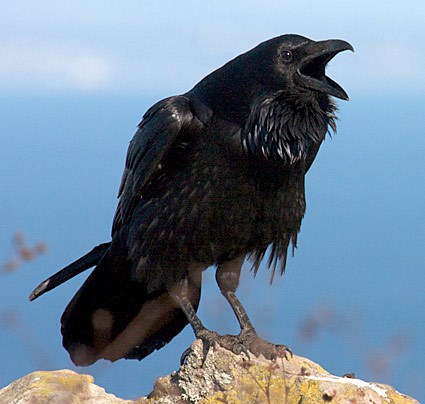 (Photo © laniisoma)A group of ravens is called an “unkindness,” and they have been associated with death in many cultures for hundreds of years. However, you shouldn’t be afraid of ravens! These birds are clever, and like crows they keep urban neighborhoods clean by feasting on carrion. In fact, ravens are social birds that love to play. They have friends and demonstrate empathy. They are also excellent at mimicking sounds, even human speech! Listen for its call, “cr-r-ruck,” and look out for this black-eyed trickster throughout western and northern North America.
(Photo © laniisoma)A group of ravens is called an “unkindness,” and they have been associated with death in many cultures for hundreds of years. However, you shouldn’t be afraid of ravens! These birds are clever, and like crows they keep urban neighborhoods clean by feasting on carrion. In fact, ravens are social birds that love to play. They have friends and demonstrate empathy. They are also excellent at mimicking sounds, even human speech! Listen for its call, “cr-r-ruck,” and look out for this black-eyed trickster throughout western and northern North America.
Barn Owl
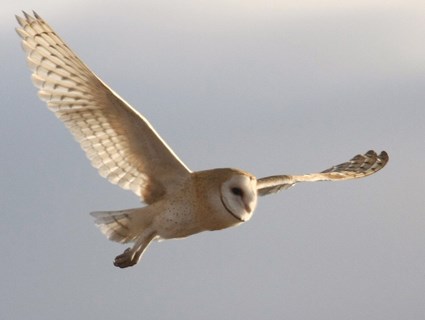 (Photo © Tim Lenz)An icon of the Harry Potter series, the Barn Owl makes a host of creepy calls, like hissing and hooting. This “magical” bird is able to fly silently through the night thanks to special feathers. It has a round white face like the moon, and feasts on mice and other small rodents. Owl pellets are made of the bones, fur, and other indigestible parts of prey that the Barn Owl regurgitates.
(Photo © Tim Lenz)An icon of the Harry Potter series, the Barn Owl makes a host of creepy calls, like hissing and hooting. This “magical” bird is able to fly silently through the night thanks to special feathers. It has a round white face like the moon, and feasts on mice and other small rodents. Owl pellets are made of the bones, fur, and other indigestible parts of prey that the Barn Owl regurgitates.
Turkey Vulture
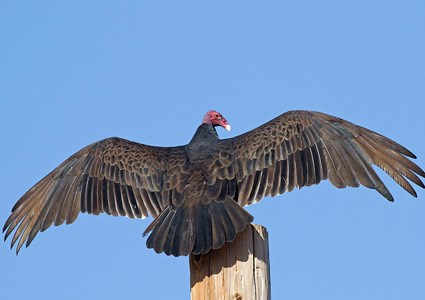 (Photo © Ned Harris )When dining on carrion, head feathers can get a little sticky. That’s why the bald, red head of the Turkey Vulture is so useful. They circle the skies looking for dinner, identifiable by their 6-foot wingspan and wobbly flight path. In Persian mythology, two vultures are said to guard the gates of the underworld, but we appreciate these helpful scavengers, who clean up roadkill, deceased wild animals, and garbage.
(Photo © Ned Harris )When dining on carrion, head feathers can get a little sticky. That’s why the bald, red head of the Turkey Vulture is so useful. They circle the skies looking for dinner, identifiable by their 6-foot wingspan and wobbly flight path. In Persian mythology, two vultures are said to guard the gates of the underworld, but we appreciate these helpful scavengers, who clean up roadkill, deceased wild animals, and garbage.
European Starling
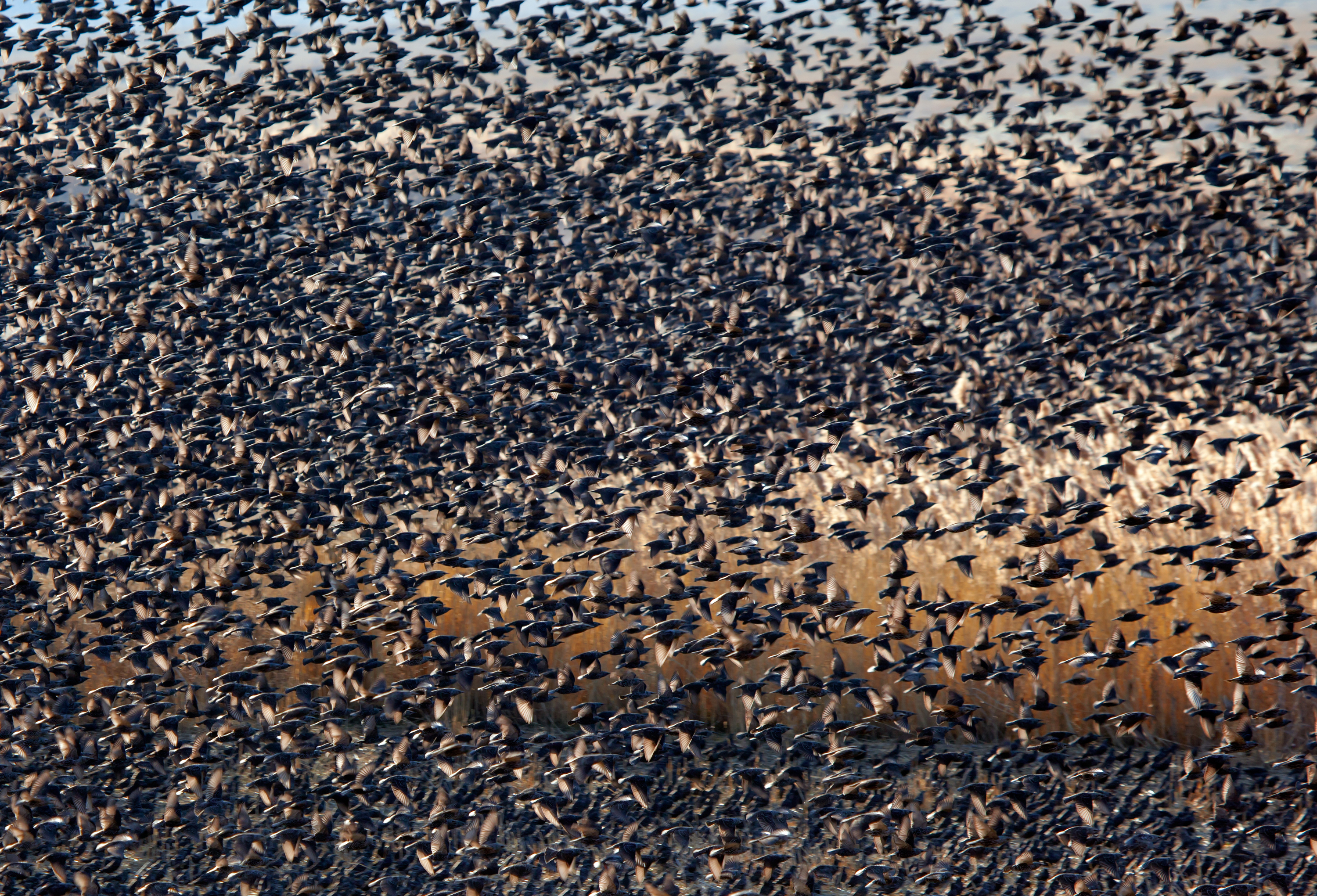 (Photo © Muratart )These invaders to America travel in gigantic, synchronized swarms called “Murmurations” and are feared by farmers because they destroy fields looking for insects and seeds to eat. Starlings sport iridescent feathers that make them appear shiny up close, but from a distance appear as black as crows or ravens.
(Photo © Muratart )These invaders to America travel in gigantic, synchronized swarms called “Murmurations” and are feared by farmers because they destroy fields looking for insects and seeds to eat. Starlings sport iridescent feathers that make them appear shiny up close, but from a distance appear as black as crows or ravens.
Common Loon
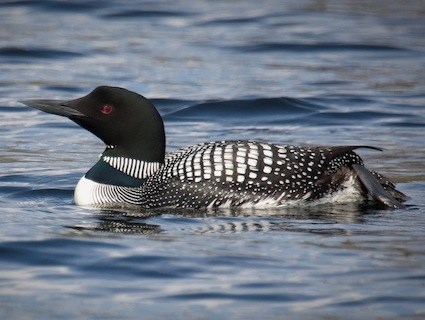 (Photo © Josh Merrill )The call of a loon could easily be confused with the howl of a wolf. Common Loons are beautiful, but their lonely, mystical songs at dusk and dawn could lead you to fear a “haunted” lake!
(Photo © Josh Merrill )The call of a loon could easily be confused with the howl of a wolf. Common Loons are beautiful, but their lonely, mystical songs at dusk and dawn could lead you to fear a “haunted” lake!
Great Potoo
 (Photo © Mauricio Calderon via Macaulay Library)A master of disguise, the Great Potoo stays still all day, pretending to be a tree branch. This is so they can hide from their predators. Potoos have a unique “Paaawwwr” growl, and only take flight to hunt insects by night. This bird is found in American tropical rainforests and is tough to spot, even by inhabitants of the ecosystem!
(Photo © Mauricio Calderon via Macaulay Library)A master of disguise, the Great Potoo stays still all day, pretending to be a tree branch. This is so they can hide from their predators. Potoos have a unique “Paaawwwr” growl, and only take flight to hunt insects by night. This bird is found in American tropical rainforests and is tough to spot, even by inhabitants of the ecosystem!
~Brigid Lucey
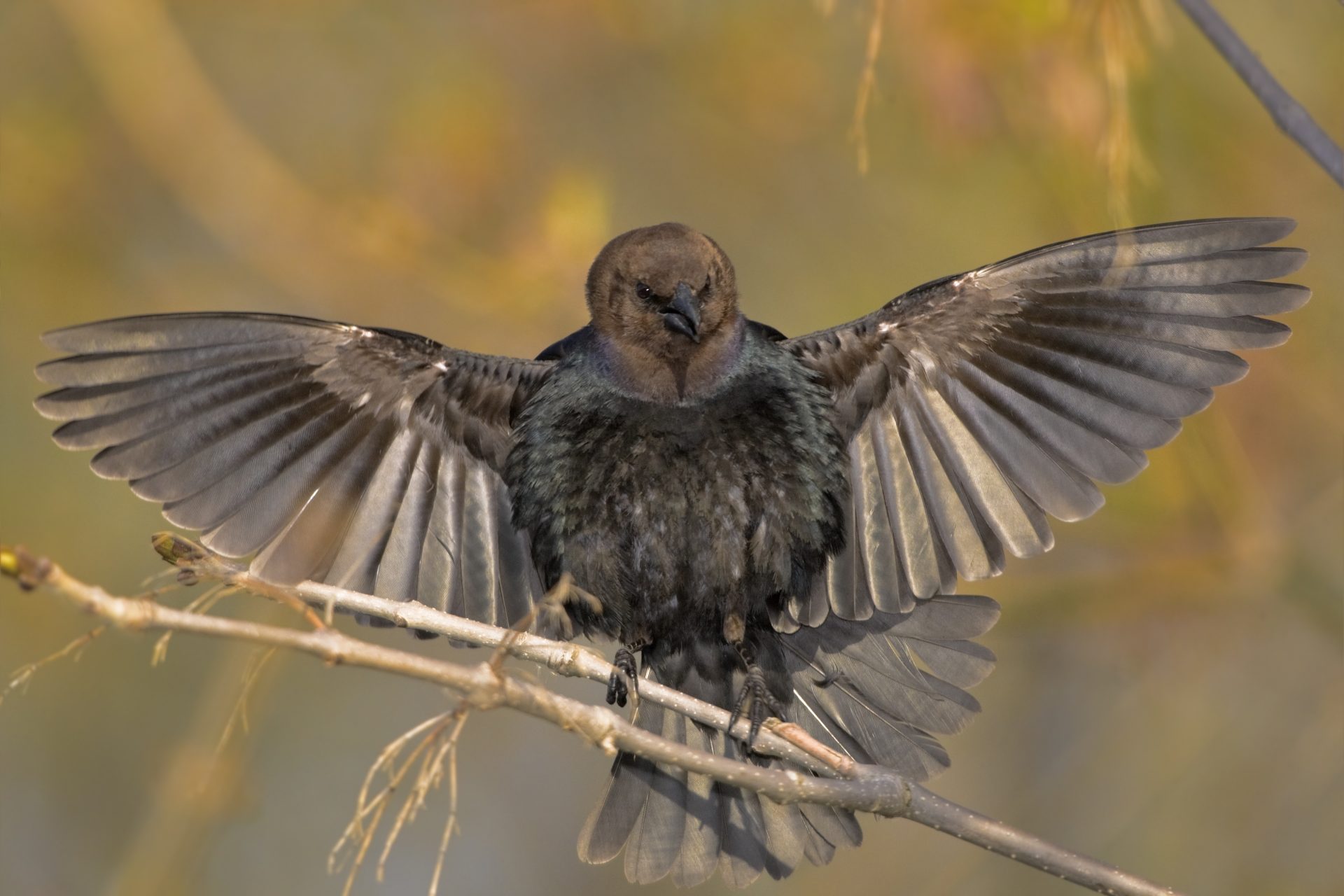 Photo ©
Tania Thomson
Photo ©
Tania Thomson







 Photo ©
Tania Thomson
Photo ©
Tania Thomson






